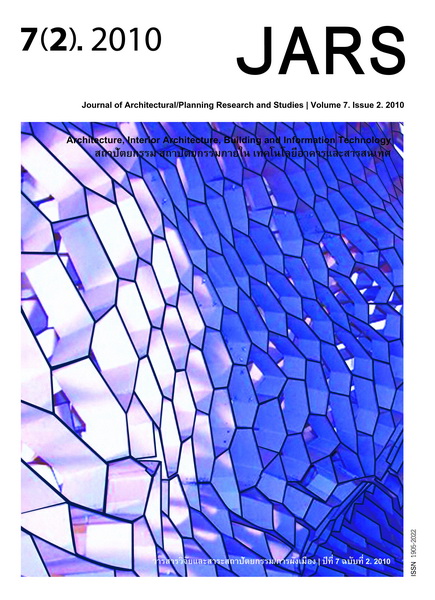Typology of Kurdistani Style Mosques in Iran
Main Article Content
Abstract
Kurdistan province has been an important part of pre-Islamic Iran territory; after Islam, it changed to
Jabal and Kurdistan. This region was the major part of the Ardalan state in the Safavid and Qajar periods
which in newly formed political divisions are divided among several provinces including Kermanshah, Hamadan,
and western Azerbaijan. Based on specific characteristics of the region a distinctive type of mosque has
been established including wooden colonnaded iwan, lateral corridors, theologian’s room, yard, and entrance.
These mosques are consisted of flat ceiling and colonnaded iwan / porticos which are deeply influenced by
the northwestern and western regions’ architectural / building style; one of these stylistic characteristics is the
plan with iwans on four corners of Shabestan. Some of these mosques are mono-iwan and some bi-iwan but
all in a rather different style from the other mosques of Iran. Iwans in these mosques are built in two floors
or built with wooden columns, which endorse a distinctive type which are called Kurdistani mosques in this
article.
Downloads
Article Details

This work is licensed under a Creative Commons Attribution-NonCommercial-NoDerivatives 4.0 International License.
All material is licensed under the terms of the Creative Commons Attribution 4.0 International (CC-BY-NC-ND 4.0) License, unless otherwise stated. As such, authors are free to share, copy, and redistribute the material in any medium or format. The authors must give appropriate credit, provide a link to the license, and indicate if changes were made. The authors may do so in any reasonable manner, but not in any way that suggests the licensor endorses you or your use. The authors may not use the material for commercial purposes. If the authors remix, transform, or build upon the material, they may not distribute the modified material, unless permission is obtained from JARS. Final, accepted versions of the paper may be posted on third party repositories, provided appropriate acknowledgement to the original source is clearly noted.
References
Ardalan, M. (2005). Tarikhull-Akrad [History of Kurds]. Arbil: Aras.
Babani, A. R. (1996). Saerull- Akrad dar Tarikh va Guqkraphia- e Kurdistan [An overview of history and geography of Kurdistan]. Tehran: Awrang Press.
Badlisi, A. S. (1995). Tarikh-E Mofasal Kurdistan Ya Sharaf Nameh [History of Kurdistan]. Tehran: Nasher Hadis.
Ettinghousen, R., & Graber, O. (1999). The art and architecture of Islam. Translated by: Yagoob, Azhand. Tehran: Samt.
Farivar, B. (2000). Kohantarin Masjed Kurdistan Iran va Chemandazi be Anasor Meamari [Old Mosques in Kurdistan Iran and Viewpoint to the Architectural Elements]. In the International Proceedings Mosques Architecture, Future. University of Art. October, 574-589.
Hamon, M. M. (1996). Motaleat-e- Jamea Tovseah Ejtemaei va Eghtesadi Ostan Kurdistan [A study about social and economical evolution of Kurdistan province]. Sanandaj: Sazmane Modiriyat va Barnamehrizi Ostan Kurdistan.
Hillenbrand, R. (1976). Saljuq dome chambers in North-West Iran, IRAN, 14, 93-103.
Hoag, J. (1996), La grammaire des styles danes L architecture Islamique. [The typology of architecture in Islamic lands]. Translated by: P. Wardjavand, Tehran: Sherkat Elmi va Farhangi.
Ibn Hauqal Nasibi, Abulghasim. (1938). Suratul-Ard, [Image of earth].
Ja, afari, M. (2000). Moarefi Do Nemonah Az Masajed Mahalaei Sanandaj [Glance of two quarter mosques in Sanandaj city]. In the International Proceeding Mosques Architecture, Future. University of Art. October, 1, 289-298.
Khan Mohammadi, B. (2000). Olgoi Shabestanhaie Chahar Sotoni, Majmoah-e Maghalat Dowmin Hamayesh Binalmelali. Meamori Masjed- Ofegh Ayandeh. In the International Proceeding Mosques Architecture, Future. University of Art. October, 1, 267- 287.
Kiani, M. Y. (1995). Tarikh honar meamari Iran dar davrah Islami [Iranian architecture of the islamic period]. Tehran: Samet.
Kurdistani, S. (2000, February 6). Negahi Be Vizhagihai Meamari Yadmanhai Islami Kurdistan Masjedhai Islami[A view to architectural monument characteristics in Kurdistan, islamic mosques]. Roznameh Hamshahri, 5.
Mardukh, M. (2000). Tarikh- e- Mardukh [The history of Kurds and Kurdistan]. Tehran: Karang.
Samia, M. (1999). Sazman Edari Hokomat Safavi, ba Talighat Minorski Bar Tazakorolomaluk [Events of the Safavid Kinks]. Translated by: Masud Rajabnia. Tehran: Amirkabir.
Mostofi, G. H. (2002). Nozhatull gholob. [Pleasure of the hearts]. Ghazvin: Hadisemroz.
Pirinia, M. K. (2001). Sabek Shansi Meamari Irani [Study of styles Iranian architecture]. Tehran: Nasher Honar Islami.
Quran Karim, (1995). Translated by: Bahedin Khoramshi. Tehran: Nilofar Va Jami.
Rashidi, M. R. (1999). Masjed Obdollah Omar [Abdollah-e Omar Mosque]. Majmoeh Maghalat Dowomin Kongerah Tarikh Meamari wa Shahersazi Iran [Second gangers of the history of Iranian architecture and urbanism]. Arg Bam Kerman [Bam Citadel Kerman, Iran]. April 14-18, 4, 455-47.
Sanandaji, M. S. (1987). Tuhfa- ye- Nasirie Dar Tarikh va Guqkrafia- y- Kurdistan [History and geography of Kurdistan]. Tehran: Amirkabir.
Vaghaya Negar Kurdestani, M. A. (2002). Hadingha- E-Nasriah Dar Guqkrafia va Tarikh-e- Kurdistan [History and geography of Kurdistan]. Tehran: Tavakuli.
Zarei, M. E. (2002). Simai Miras- Farhangi Kurdistan [Insight to the Kurdistan cultural heritage]. Tehran: Sazman Miras Farhangi Keshwar (I.C.H.O).
Zarei, M. E. (2004). Tahawol Fazai Meamari Masajed Dowrah Saljughi Shomal Gharb Iran (Masajed Jame: Urmiah, Salmas, Qorwah) [The evolution of architectural space in the Saljuq Mosques of Northwestern Iran (Jame Mosques of Urmieh, Sujas, Qurveh)]. Proceedings of the International Symposium on Iranian Archaeology Northwestern Reign. In Masud Azarnosh, Pazhoheshkadah Bastanshansi, Sazman Miras Farhangi va Gardeshgari (Eds.). Iranian Center for Archaeological Research,120-136.
Zarei, M. E. (2006). Masjed- Madraseh Darullehsan Sanandaj [Mosque and Madraseh of Darullehsan in Sanandaj]. Sanandaj: Cultural Heritage of Kurdistan Province Office.
Zarei, M. E. (2007). Taghiir Va Tahavolat Shahre Sanandaj Dar Dowran Safavi Va Qajar Az Didgah Bastanshenakhti [Urban changes and evolution of Sanandaj in the Safavid and Qajar periods: An Archaeological approach], Thesis Submitted to the Graduate Studies of the Requirements for the Degree of Ph.D., Faculty of Literature and Humanities Department of Archaeology, University of Tehran.


